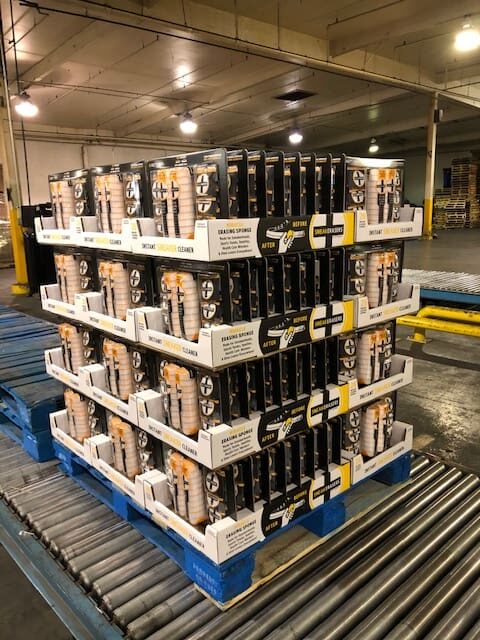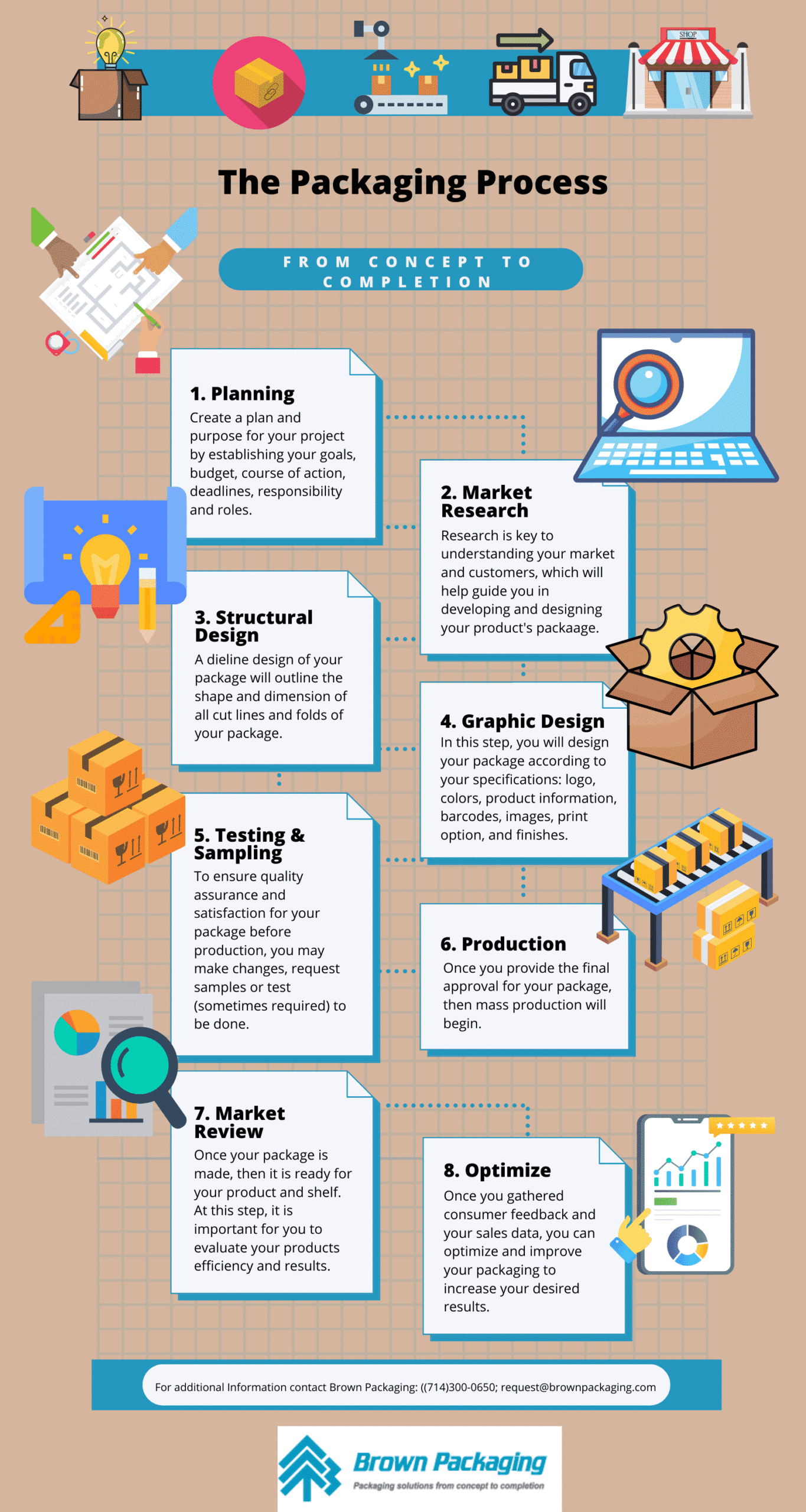Home » The Custom Packaging Process Explained
The Custom Packaging Process Explained

The custom packaging process can be quite confusing, especially for a new or inexperienced buyer. However, this process can be broken down into 8 simple steps, making it easier to understand and manage. Knowing these steps will help you develop realistic expectations and plan your course of action effectively.
Why Custom Packaging?
Custom packaging differs significantly from purchasing standard or stock products. It involves creating packages that are tailor-made for your product, including specific structures, graphics, materials, and features. While custom packaging offers significant advantages in terms of protection, efficiency, and marketability, it also requires more time, planning, effort, and capital.

Step 1: Planning
Planning is the foundational step in the custom packaging process. It’s where you define what you want to achieve with your packaging. Establish your project’s goals, budget, materials, roles, deadlines, and overall course of action. Consulting with packaging experts during this phase is crucial to set realistic expectations and lay down a strategic roadmap.
Step 2: Market Research
Effective market research is critical to understanding your target audience and positioning your brand strategically. This step involves analyzing market trends, customer behavior, and competitor packaging strategies. The insights gained here will guide the design and functionality of your custom package, ensuring it appeals effectively to your customers.

Step 3: Dieline Design
The dieline design is your packaging blueprint. It outlines the exact size, shape, and folding lines of your package. Working with a skilled packaging designer at this stage is recommended to ensure the structure of your package is both attractive and functional.
Step 4: Graphic Design
Graphic design brings your package to life visually. This step involves integrating your brand’s logos, colors, and thematic elements into the packaging design. It’s also crucial to include essential product information and adhere to any regulatory labeling requirements.
Step 5: Testing and Sampling
Before moving into mass production, testing and sampling your packaging is essential. This phase allows you to evaluate the package’s physical durability and aesthetic appeal. Adjustments can be made based on this feedback to enhance the design.
Step 6: Production
Production begins once your design is finalized and approved. This stage requires close coordination with your manufacturer to ensure the packaging is produced to exact specifications. Maintaining high quality control standards during production is crucial to prevent any issues that could impact the effectiveness of your packaging.

Step 7: Market Review
After production, evaluate how your packaging is performing in the market. Monitor sales data, customer feedback, and any logistical issues. This review can provide valuable insights into how well your packaging meets your business goals and customer needs.
Step 8: Optimize
The final step is optimization. Based on the feedback and data collected, look for ways to improve your packaging. Whether it’s a design tweak, a material change, or an adjustment in the production process, continuous improvement will help maximize the effectiveness of your packaging.

Summary: Custom Packaging Process
Understanding the custom packaging process in these eight steps can significantly simplify the complexities involved. By carefully managing each stage, from planning to optimization, you can ensure that your packaging not only protects your product but also powerfully enhances its market presence.
At Brown Packaging we are experienced in working with clients from concept to completion. We can provide you all your packaging needs will maintaining a consultative approach.
Following multiple rounds of tariff changes and trade policy adjustments, 2026 marks a turning point for U.S. packaging buyers. Many who previously transitioned from China
Shifting packaging production from China to the U.S. can help stabilize costs, reduce tariff exposure, and shorten lead times. But the transition process requires careful
RSC boxes are known for their efficiency and versatility, but their performance ultimately comes down to strength. Buyers often see numbers like ECT, BCT, and
In packaging, foam isn’t just about initial protection — it’s about maintaining performance over the entire shipping or storage cycle. Compression set and recovery characteristics
Pouches are a go-to for flexibility and convenience, but they can fail in critical ways—from poor seals to punctures and delamination—that hurt performance and brand
In the retail environment, the placement of Point of Purchase (POP) displays is just as critical as their design and content. Strategic positioning can significantly
Home » The Custom Packaging Process Explained

Following multiple rounds of tariff changes and trade policy adjustments, 2026 marks a turning point for U.S. packaging buyers. Many who previously transitioned from China

Shifting packaging production from China to the U.S. can help stabilize costs, reduce tariff exposure, and shorten lead times. But the transition process requires careful

RSC boxes are known for their efficiency and versatility, but their performance ultimately comes down to strength. Buyers often see numbers like ECT, BCT, and


